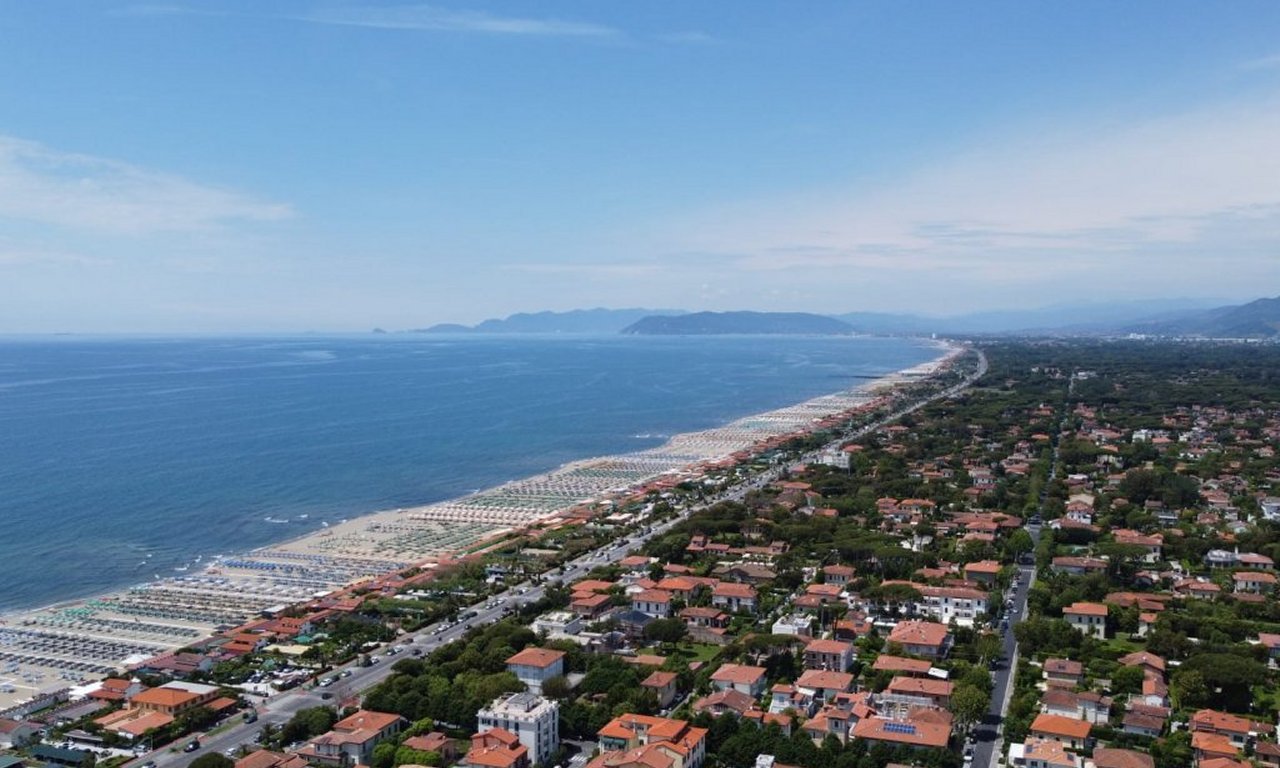
History of Forte dei marmi
The sea of Versilia in Tuscany.
Forte dei Marmi, in the province of Lucca, is a seaside holiday resort. It overlooks the Ligurian Sea and takes its name from the fort of the same name which stands in the center of the city.
The town is characterized by a strong presence of greenery, especially pine forests and some surviving patches of holm oak. Although there are not many public parks, the city is adorned with tree-lined avenues and villas with large gardens.
The beach of Forte dei Marmi is entirely composed of very fine golden sand. The sea in certain periods of the year is relatively clear and transparent even far out to sea.
Monuments and places of interest
In the center of the city, there is the Forte Lorenese (better known as Fortino ), symbol of the country. The grand ducal fortress, built at the end of the 18th century, is today immersed in a modern urban context made up of a grid of tree-lined streets. On the upper floor there is the Museum of Satire and Caricature.
On the sea there is the loading pier, 300 meters from the coast, which was used to load the large blocks of marble leaving for the whole world. Today it is a tourist destination and a temporary docking point for the local ferry that heads to the nearby Cinque Terre.
In the Roma Imperiale district, there are numerous villas designed by well-known architects such as Giovanni Michelucci, Giò Ponti and Giuseppe Pagano. Among them the Villa Agnelli, now a hotel, with the underpass that leads directly to the seashore, and the famous Capannina di Franceschi nightclub, inaugurated in 1929 and still in business.
The Villa Bertelli today hosts exhibitions and concert performances. Not very far from it is the memorial house of the sculptor Ugo Guidi, home to a museum in honor of him. Many of his productions are preserved inside, but temporary exhibitions are also held.
The religious structures found in Forte dei Marmi: the church of Sant'Ermete, that of San Francesco d'Assisi and the church of the Resurrection.
In the hamlet of Vaiana there is the new church of Santa Teresa.
Much adored are the "marginette" (small aedicules that preserve an icon of the Madonna typical of Versilia) located in various points of the town.
Tourism
At the end of the 19th century many wealthy families from the hinterland came down to the coast to benefit from the sea air. In the twentieth century, aristocratic families from Tuscany and northern Italy chose Forte dei Marmi for their summer holiday, and were then followed by high-ranking European families.
This influx allowed the birth of the first bathing establishment in 1904 called "l'Onda Marina", still present today.
Thanks to it, numerous prominent people elected the city as their personal summer meeting place, giving birth to its tourist vocation. The first villas began to arise among the pine forest by the sea.
A group of intellectuals and artists came to life, Quarto Platano, who met daily to discuss culture and art.< /p>
The tourism boom occurred in the post-war period, especially in the sixties when more and more families began to build numerous beach houses and book in hotels.
Today the vocation of elite tourism remains alive as the area is frequented by wealthy entrepreneurs, freelancers, industrialists, politicians, entertainment, sports and finance personalities.



